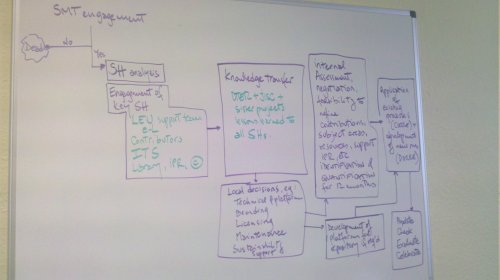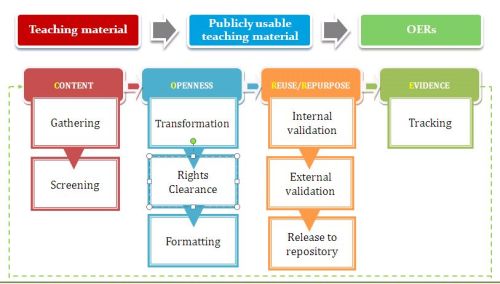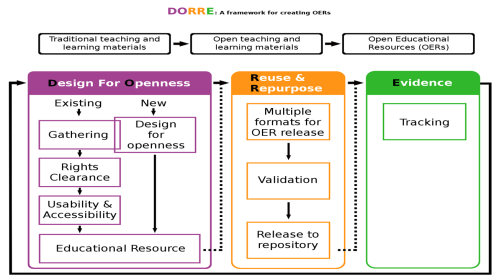On Friday I attended a very inspiring SCORE seminar at Nottingham on institutional issues around OERs. There were great presentations from Tom Browne (Exeter), Melissa Highton (Oxford) and Steve Stapleton (Nottingham) in the morning, followed by an international focus in the afternoon – a remote presentation by Cheryl Hodgkinson-Williams from the University of Cape Town, South Africa, and Willem Van Valkenburg of the Technology University Delft, the Netherlands. Some of the interesting discussions we had revolved around the following topics:
Who has authority to release OERs in institutions?
Exeter, Leicester and Nottingham all have centralised procedures in place for checking OERs before release – mainly to ensure that a suitable Creative Commons licence has been allocated, that the materials are ‘clean’ from an IPR perspective, and that the formatting of the OERs enables reuse and repurposing as far as possible.
At Oxford there is some devolution of authority, with academics and their Heads of Departments signing off on OERs before release as confirmation that there is no copyright infringement. Here, the central OER team’s role is mainly focused on the provision of technical support. At UCT in South Africa, academics have the authority to release their materials themselves, after receiving support from a small central team on copyright, licensing and formatting. This is seen as an essential aspect of sustainability of the OER vision. There is a similar devolution at Delft. Once a teacher has posted a course to their VLE (Blackboard), they can choose to apply a conversion script to publish the item as OCW.
These various models for publication and release of OERs will be elaborated on at the OSTRICH OER11 presentation on 14 May.
Is it a good idea to use the term ‘OER’ in our institutional marketing?
We speculated on whether the term ‘OER’ is widely understood outside of the project teams working on OERs. The term OCW may be more familiar to people because it was popularised by MIT several years ago. Willem also noted that students at Delft preferred the concept of OCW (whole learning programmes with all the support materials) to OERs (decontextualized resources of varying sizes). Some project reps indicated that they only used the term ‘OER’ in reports to JISC, but used the more widely understood term ‘Creative Commons’ in flyers for workshops with academics.
The difference between OERs being released purely as marketing tools and OERs being released as learning materials
This issue was touched on in various discussions throughout the day. I have tried to represent the different outcomes of these two basic approaches in the table below, also drawing on the online discussion hosted by JISC (one of the ‘2nd-Tuesday’ workshops for the JISC Phase 2 OER projects) on 8 March.
| Marketing |
Learning |
| Small, decontextualized chunks of learning materials |
Whole packages with lots of context – usually referred to as OCW rather than OERs |
| More multimedia (e.g. iTunes U, YouTube) |
More print and audio files |
| Generally not reused by the authors in their own teaching because the OERs are small decontextualized chunks of material; the actual course materials from which these OERs are derived remain locked behind the garden walls of institutional VLEs and get updated there. |
Generally reused by the authors/ institutions for teaching the programme rather than using materials in the VLE. |
| Not intrinsically linked to either face-to-face or distance learning |
Seen as a precursor for campus-based institutions to offering online courses for distance learning, where all material will be openly available on the Web. |
| These OERs are OK for reuse by other academics but often not very useable by self-learners, as the lack of context can create difficulties for learners. |
More useable by self-learners because the additional context makes them more self-explanatory. |
As the concept of the OER university comes of age, these issues are likely to be debated a great deal more.
Gabi Witthaus, 14 March 2011
Read Full Post »


